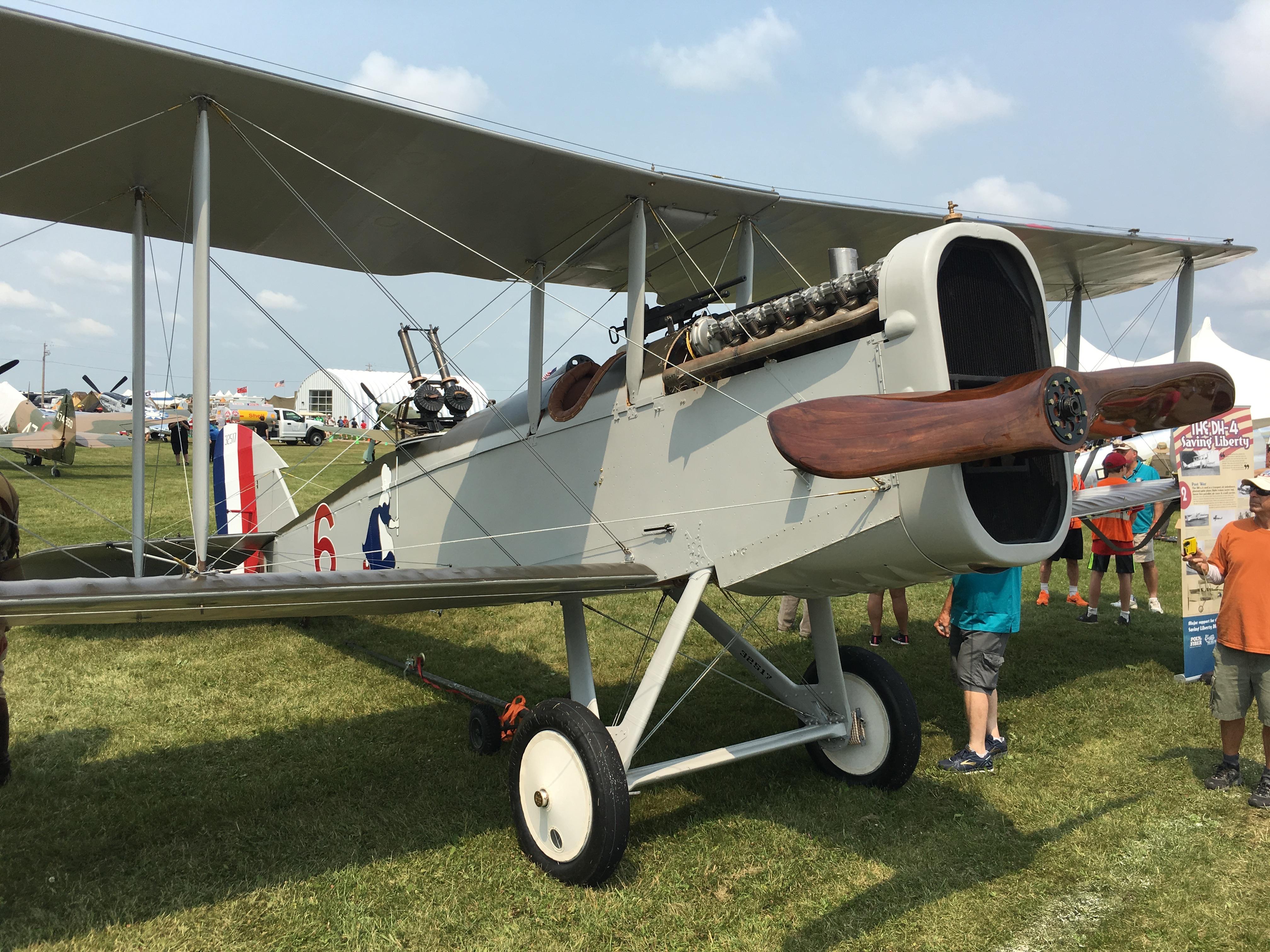
Made in America
America was late to enter World War I, and its aviation industry took even longer to get a war footing. But before the conflict finished, it was turning out license-built de Havilland DH.4 bombers, similar to those that formed the backbone of the British bomber fleet. This example is a brand-new recreation constructed over 15 months, incorporating some parts of an original. When it flies in September, it will be one of perhaps three DH.4s flying in the U.S.
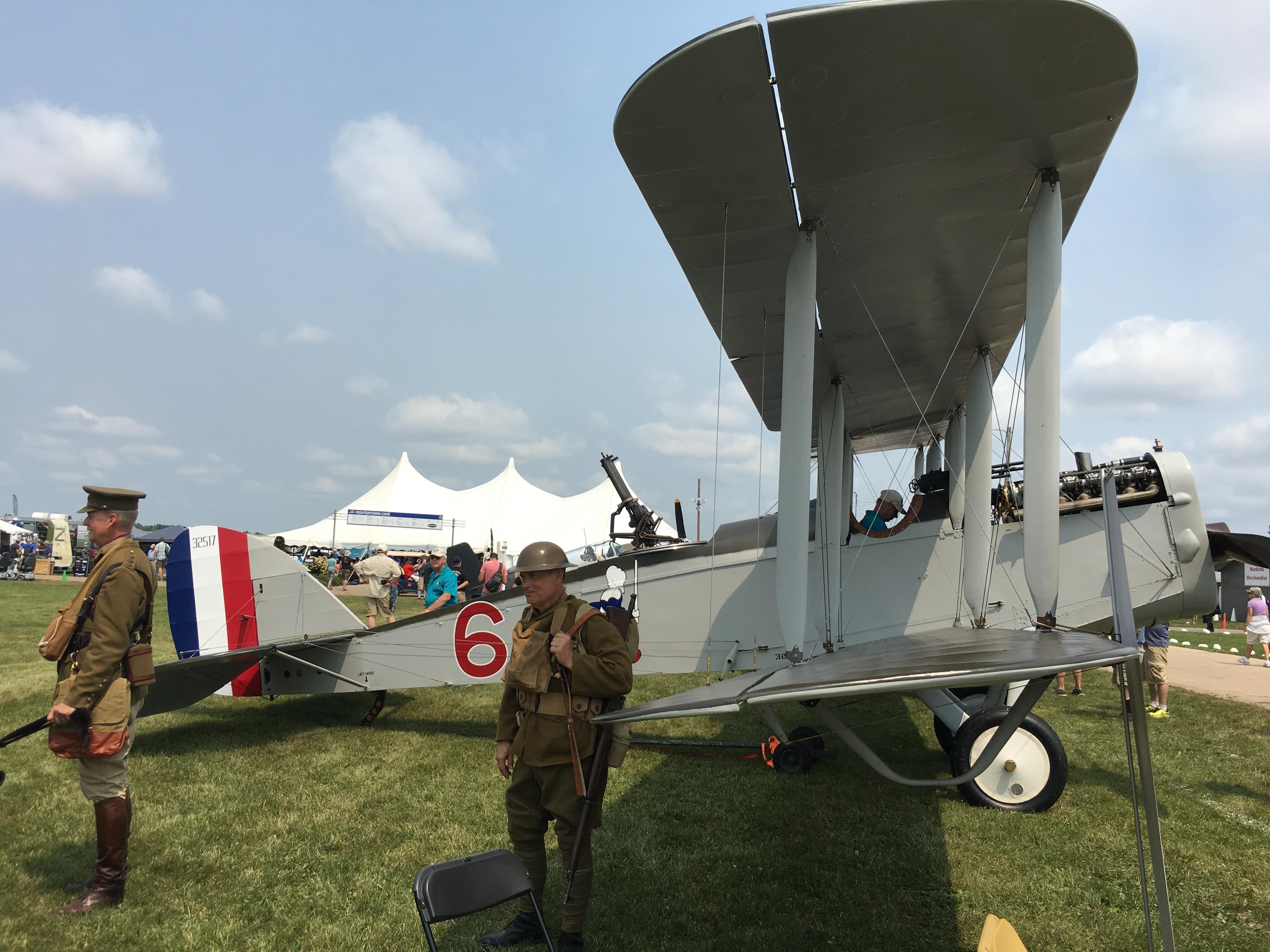
Flaming Coffin
The DH.4 was nicknamed "The Flaming Coffin" by the British due to its propensity to catch fire. The main fuel tank was in the fuselage between the pilot and gunner, making the aircraft somewhat vulnerable in combat. The example at Oshkosh is powered by an American Liberty engine.
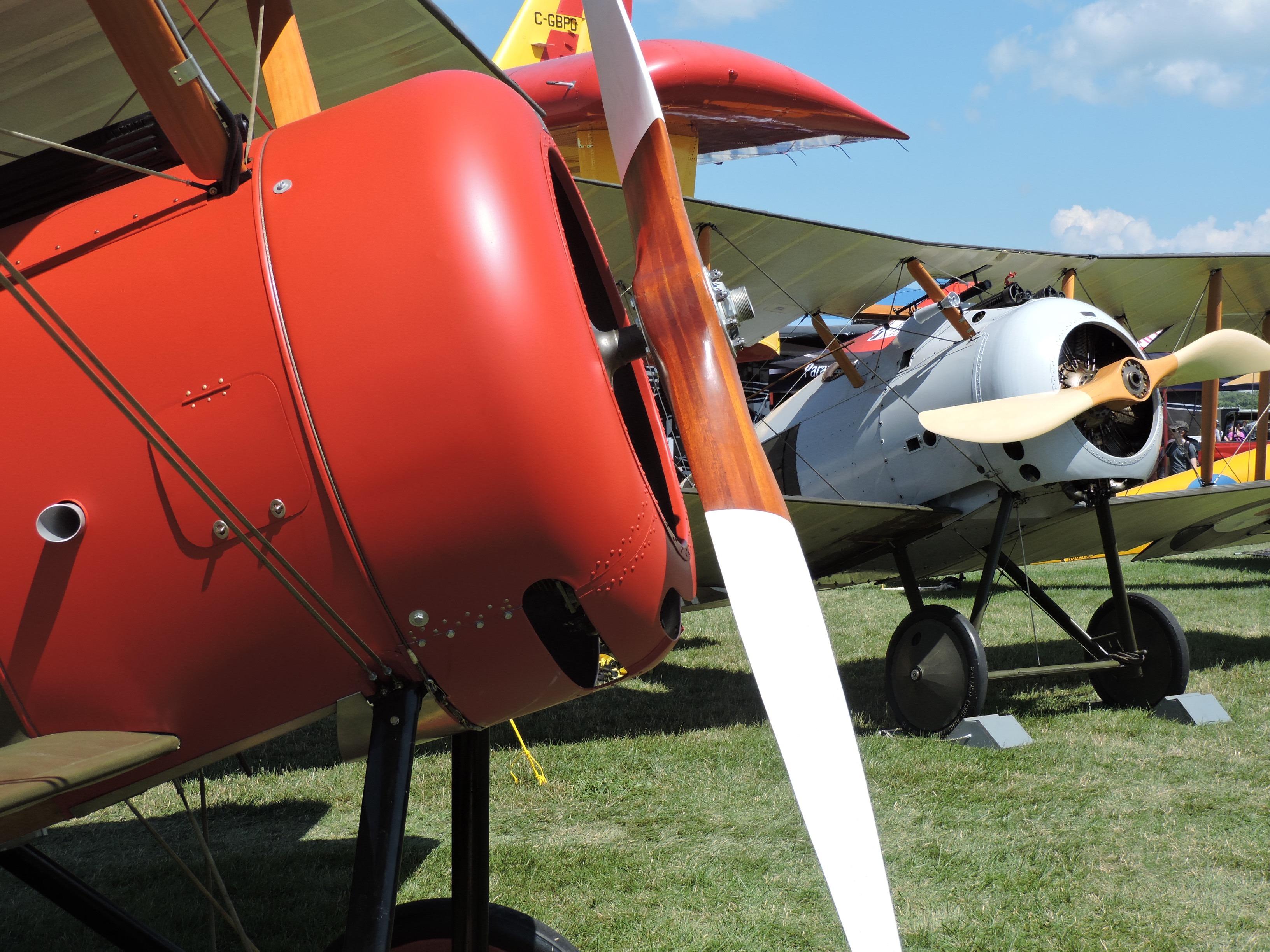
Rotary Engines
Britain’s Sopwith fighters from the Pup onward used rotary engines that spun with the propeller, creating gyroscopic forces that had some interesting effects on handling. Nevertheless, the aircraft were nimble and effective in the right hands. Here a Sopwith Pup and the later, more powerful, Sopwith Snipe show off their lines.
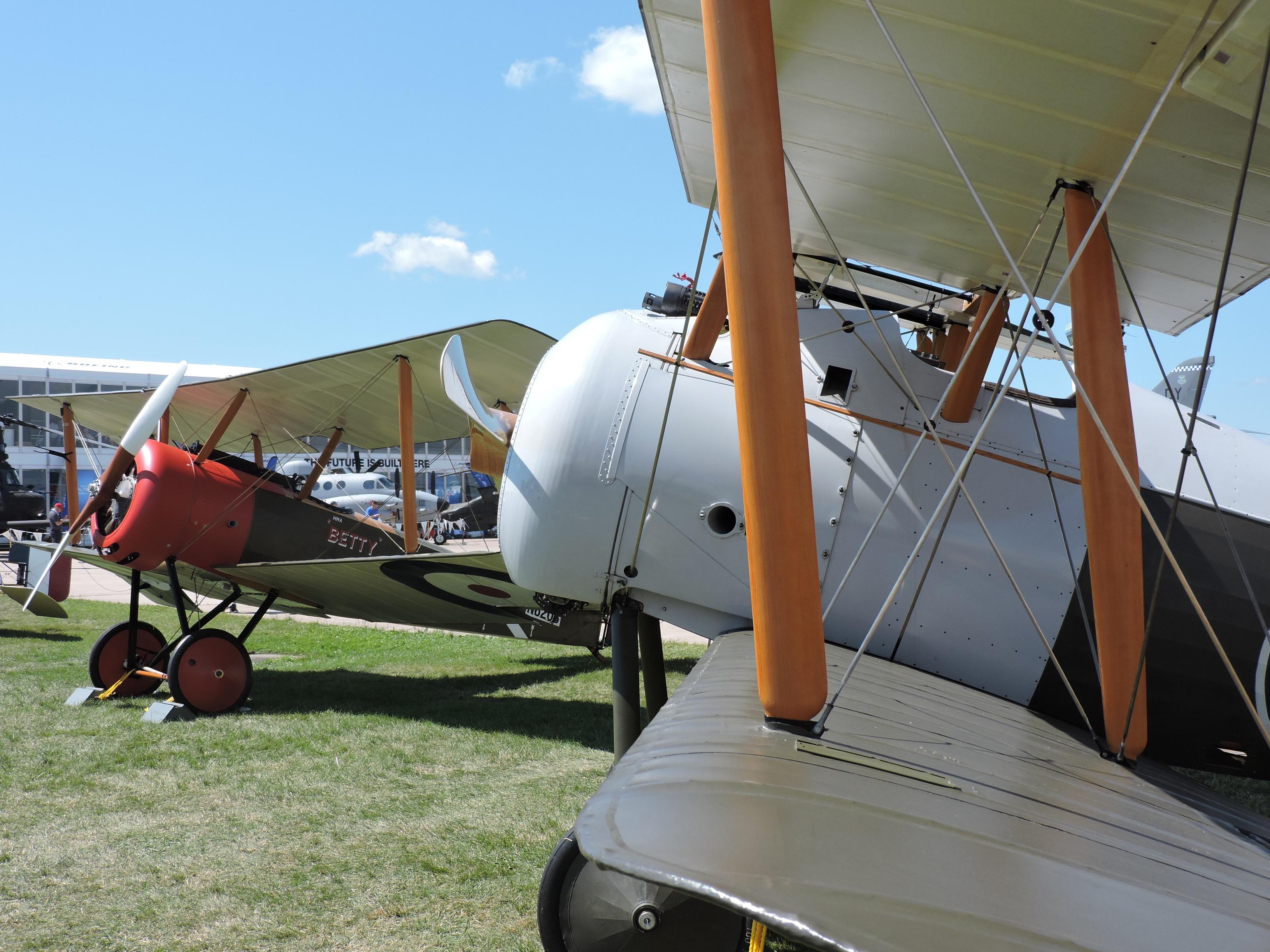
Flying Reproductions
Both the Pup and Snipe are flyable reproductions, built as accurately as possible to original specifications. Both are owned by collector Kermit Weeks.

This Pup Is a Pussycat
The Sopwith Pup was known for its gentle and delightful handling characteristics, but it soon proved to be too lightly armed with just a single machine gun. Its successor, the Sopwith Camel, provided quite a contrast and matched the best German aircraft on the Western Front for some time.
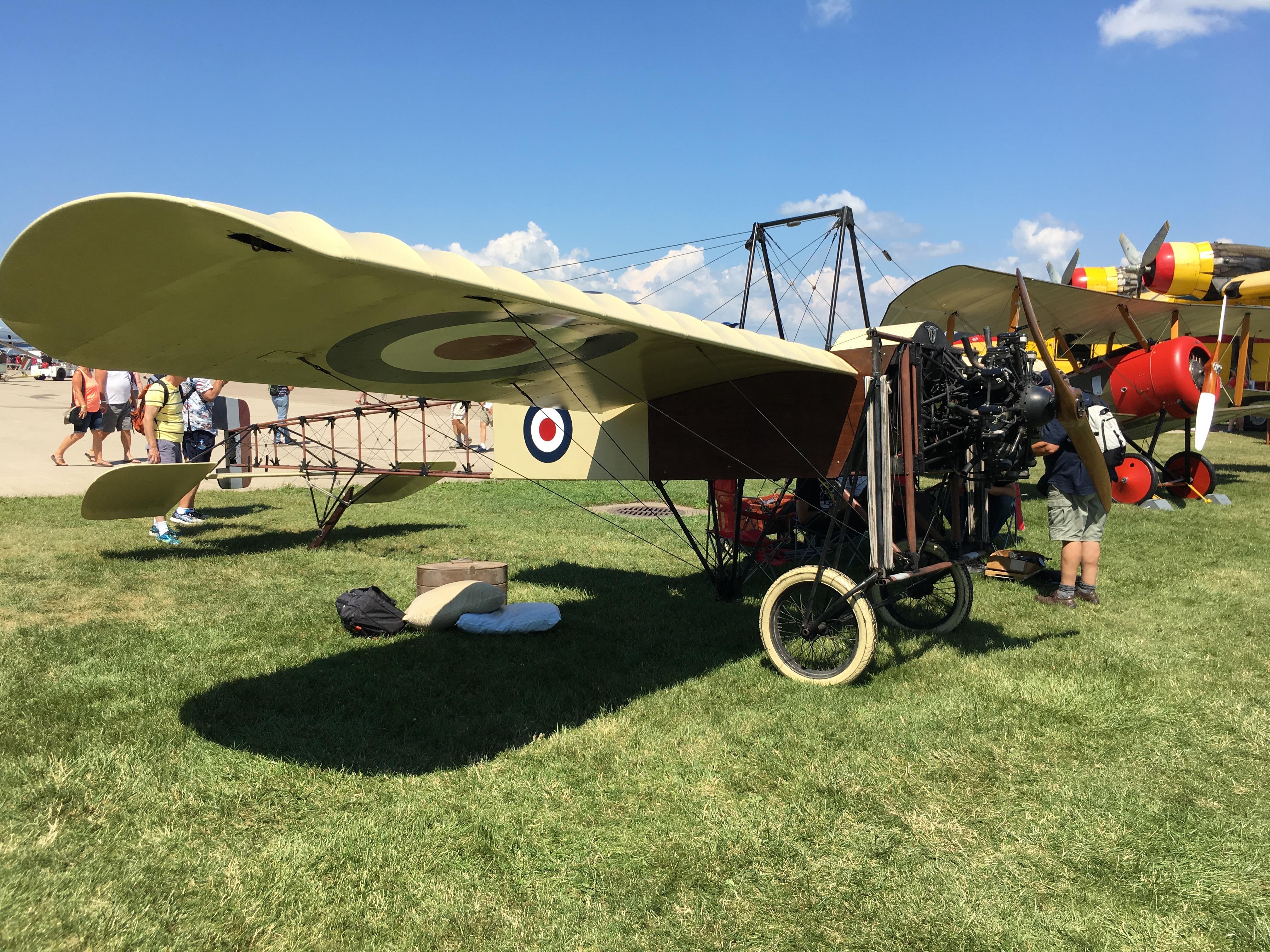
Early Bleriot
Bleriot monoplanes came to the public’s attention when Louis Bleriot flew the English Channel in one in 1909. That feat led to military service, and several types of Bleriot were used by the British in the early days of World War I as spotter and training aircraft, and even as very light bombers. The aircraft pictured is a modern lookalike.
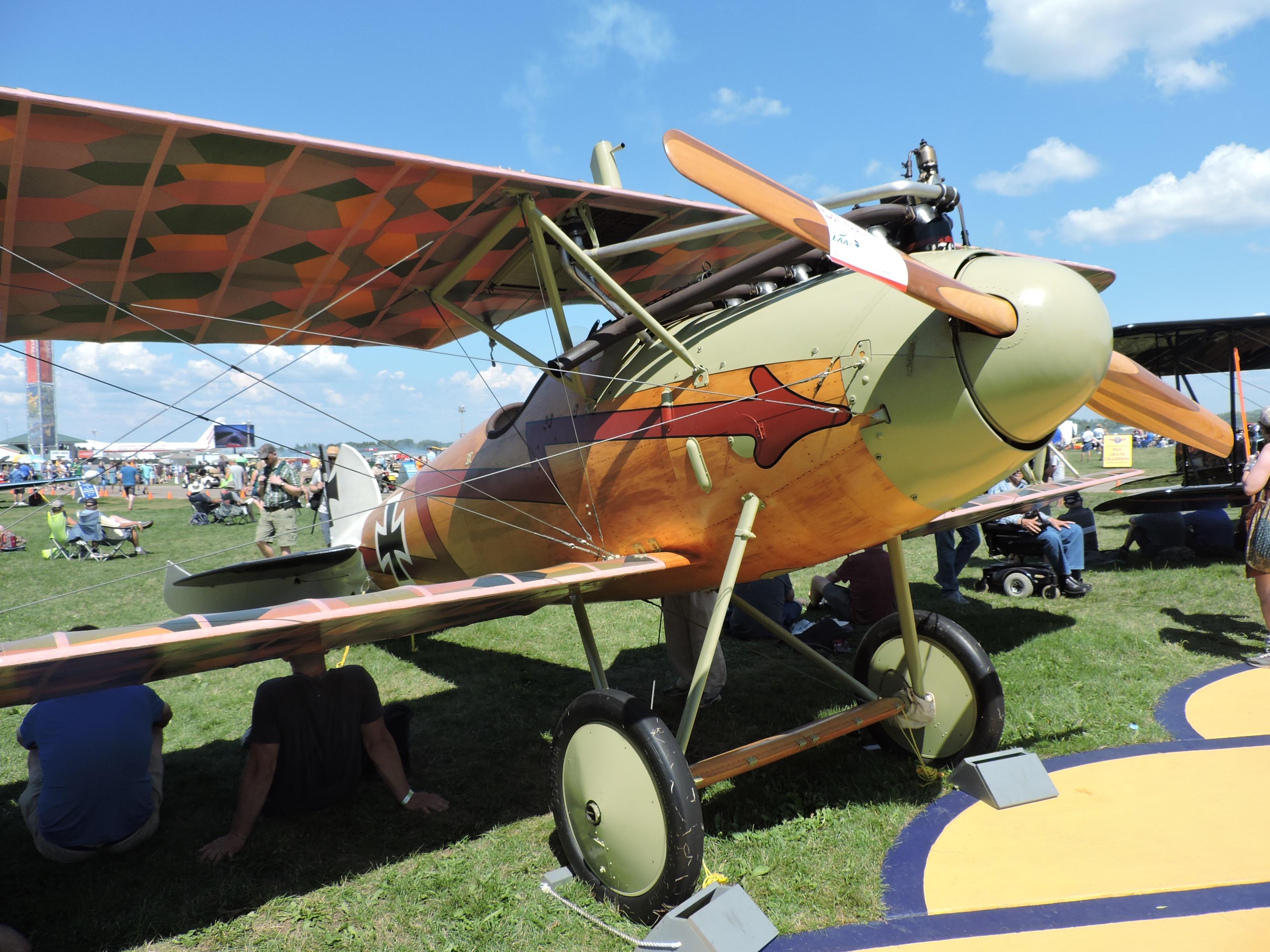
Albatros
Kermit Weeks’ German Albatros D.Va is a modern, absolute reproduction built by The Vintage Aviator Ltd. in New Zealand. The flyable aircraft features a monocoque plywood fuselage and a Mercedes engine.
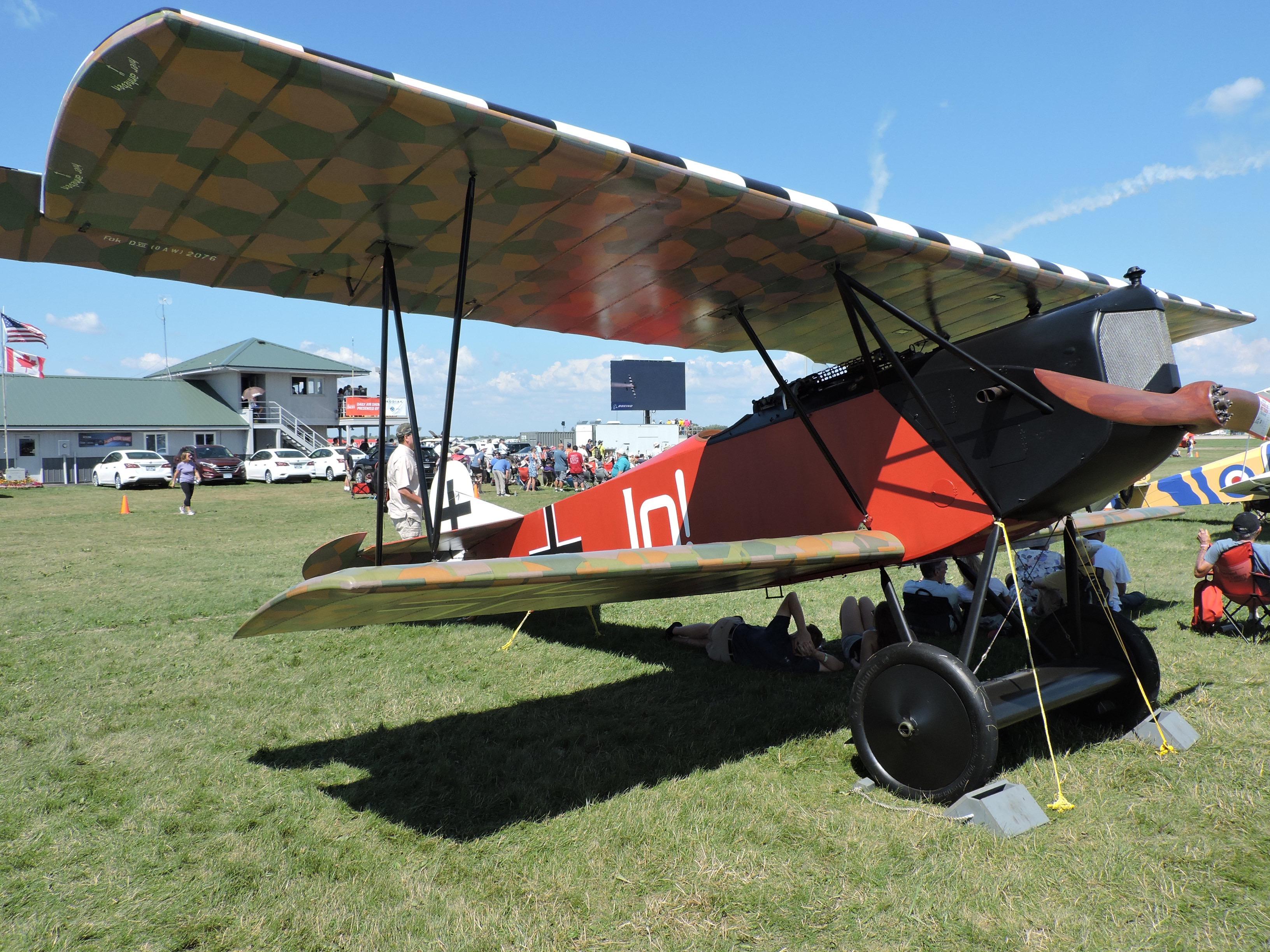
Famous Fokker
Dutch designer Anthony Fokker might be best known for the Red Baron’s Fokker Triplane, but his best aircraft in World War I was the Fokker D.VII. Easy to fly, fast and lethal, it arrived too close to the end of the war to make a decisive difference for the Germans. This flying reproduction is another from Kermit Weeks’ collection.
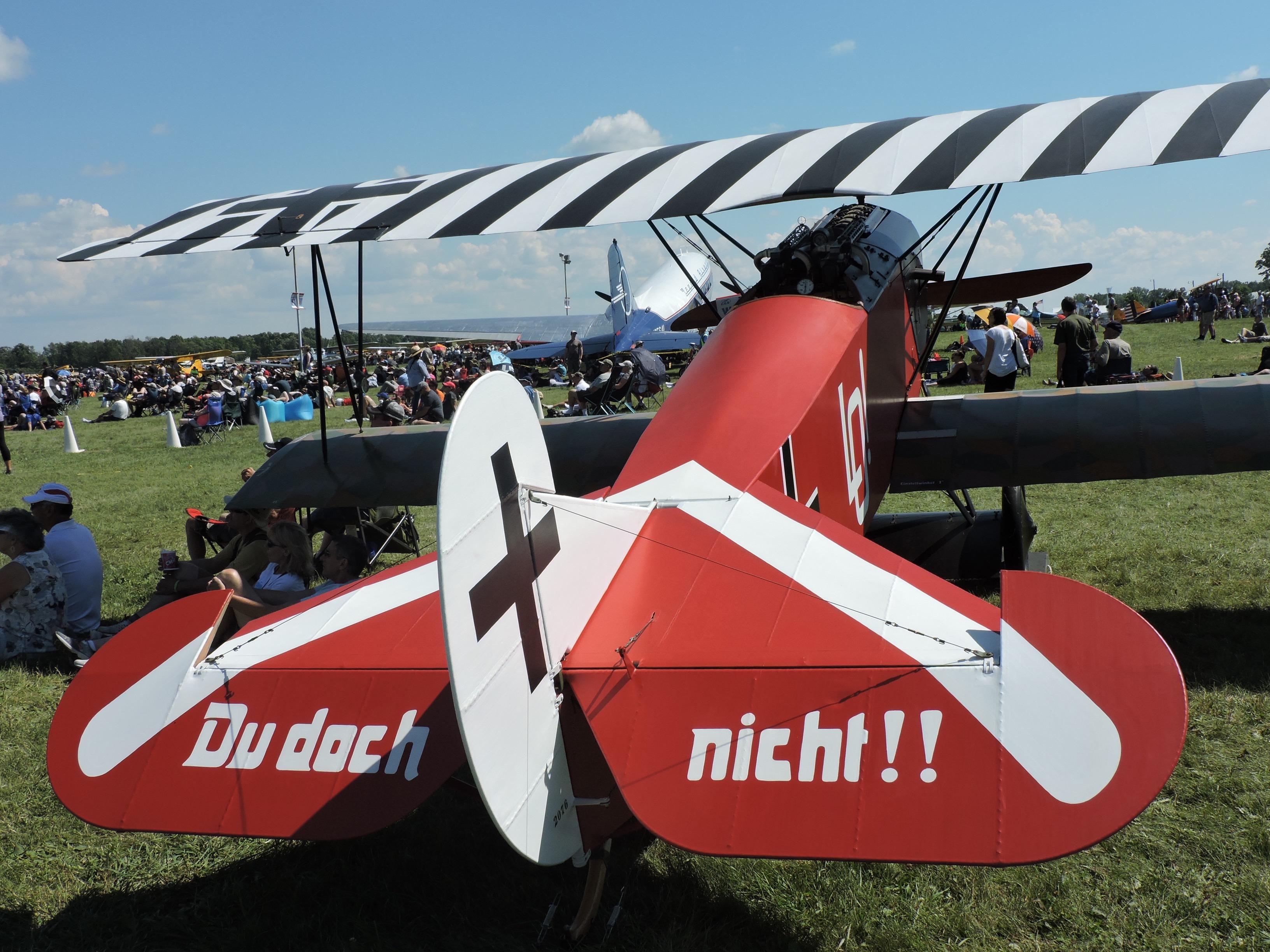
Not Your Lucky Day
"Du doch nicht!!" was the slogan painted by ace Ernst Udet on the tail of his Fokker D.VII to taunt any British pilot who came close enough to read it. Literally "But Not You!" dared the enemy to try to shoot him down. Udet also painted stripes at an angle on the upper wing to throw off the aim of any an attacking pilot.
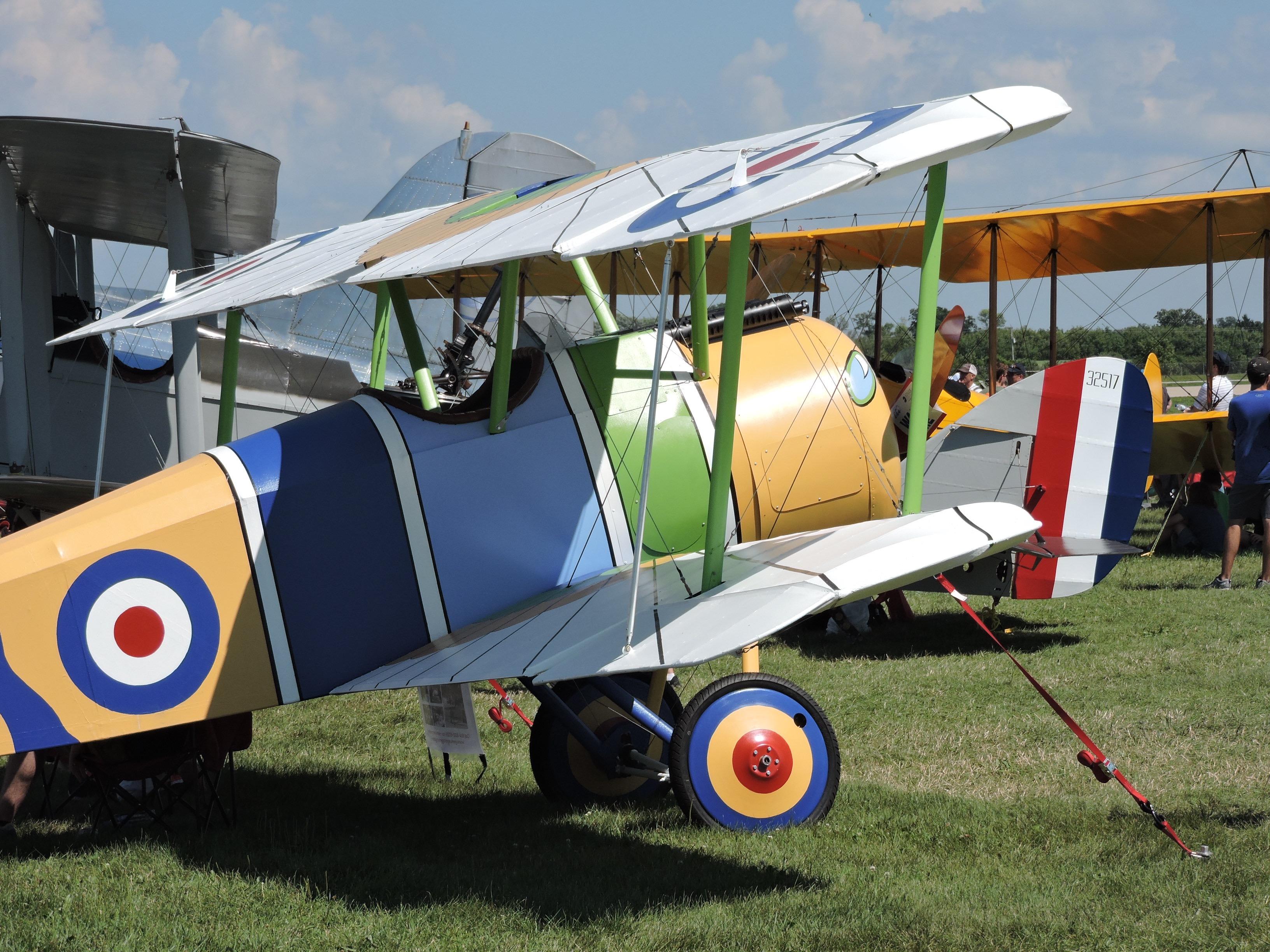
Modern-Day Snoopy
The romance of an open cockpit, scarf flying in the breeze, has spawned a small industry for fantasy aircraft that look like their World War I predecessors. Easy to build and fly, and relatively inexpensive, these "gentle" fighters are becoming increasingly popular in full or three-quarter scale. Here is a Sopwith Camel lookalike from kit manufacturer Airdrome Aeroplanes of Holden, Missouri.

Made in America
America was late to enter World War I, and its aviation industry took even longer to get a war footing. But before the conflict finished, it was turning out license-built de Havilland DH.4 bombers, similar to those that formed the backbone of the British bomber fleet. This example is a brand-new recreation constructed over 15 months, incorporating some parts of an original. When it flies in September, it will be one of perhaps three DH.4s flying in the U.S.

Flaming Coffin
The DH.4 was nicknamed "The Flaming Coffin" by the British due to its propensity to catch fire. The main fuel tank was in the fuselage between the pilot and gunner, making the aircraft somewhat vulnerable in combat. The example at Oshkosh is powered by an American Liberty engine.

Rotary Engines
Britain’s Sopwith fighters from the Pup onward used rotary engines that spun with the propeller, creating gyroscopic forces that had some interesting effects on handling. Nevertheless, the aircraft were nimble and effective in the right hands. Here a Sopwith Pup and the later, more powerful, Sopwith Snipe show off their lines.

Flying Reproductions
Both the Pup and Snipe are flyable reproductions, built as accurately as possible to original specifications. Both are owned by collector Kermit Weeks.

This Pup Is a Pussycat
The Sopwith Pup was known for its gentle and delightful handling characteristics, but it soon proved to be too lightly armed with just a single machine gun. Its successor, the Sopwith Camel, provided quite a contrast and matched the best German aircraft on the Western Front for some time.

Early Bleriot
Bleriot monoplanes came to the public’s attention when Louis Bleriot flew the English Channel in one in 1909. That feat led to military service, and several types of Bleriot were used by the British in the early days of World War I as spotter and training aircraft, and even as very light bombers. The aircraft pictured is a modern lookalike.

Albatros
Kermit Weeks’ German Albatros D.Va is a modern, absolute reproduction built by The Vintage Aviator Ltd. in New Zealand. The flyable aircraft features a monocoque plywood fuselage and a Mercedes engine.

Famous Fokker
Dutch designer Anthony Fokker might be best known for the Red Baron’s Fokker Triplane, but his best aircraft in World War I was the Fokker D.VII. Easy to fly, fast and lethal, it arrived too close to the end of the war to make a decisive difference for the Germans. This flying reproduction is another from Kermit Weeks’ collection.

Not Your Lucky Day
"Du doch nicht!!" was the slogan painted by ace Ernst Udet on the tail of his Fokker D.VII to taunt any British pilot who came close enough to read it. Literally "But Not You!" dared the enemy to try to shoot him down. Udet also painted stripes at an angle on the upper wing to throw off the aim of any an attacking pilot.

Modern-Day Snoopy
The romance of an open cockpit, scarf flying in the breeze, has spawned a small industry for fantasy aircraft that look like their World War I predecessors. Easy to build and fly, and relatively inexpensive, these "gentle" fighters are becoming increasingly popular in full or three-quarter scale. Here is a Sopwith Camel lookalike from kit manufacturer Airdrome Aeroplanes of Holden, Missouri.
World War I—called "The War To End All Wars"—stopped 100 years ago. During the four years it raged, airplanes came of age as combat machines, developing from unarmed observation platforms to full-fledged fighters and bombers.
Several reproductions and replicas were displayed at Oshkosh, reminding us just how far aviation has progressed. Yet the Sopwith, Fokker and Albatros represented the latest in technology for their day, and as anyone who has tried to build a replica can attest, they were certainly not simple machines.










